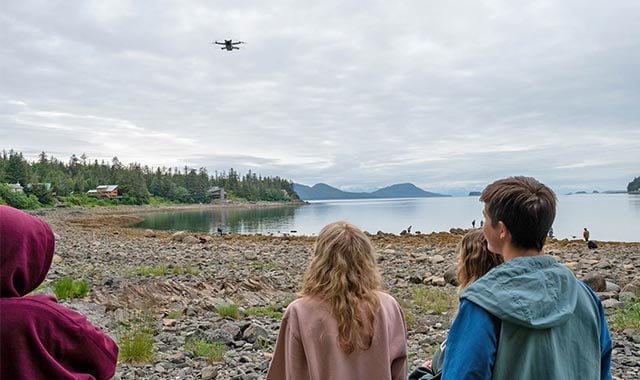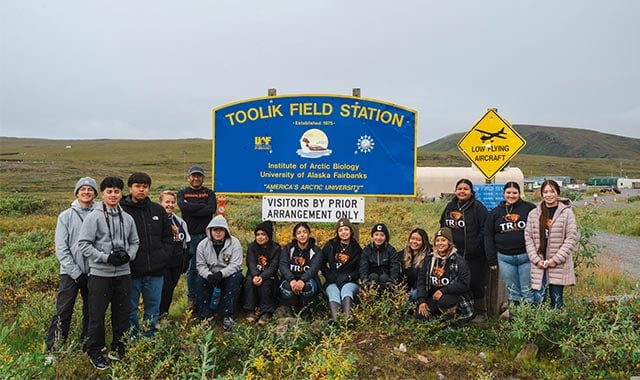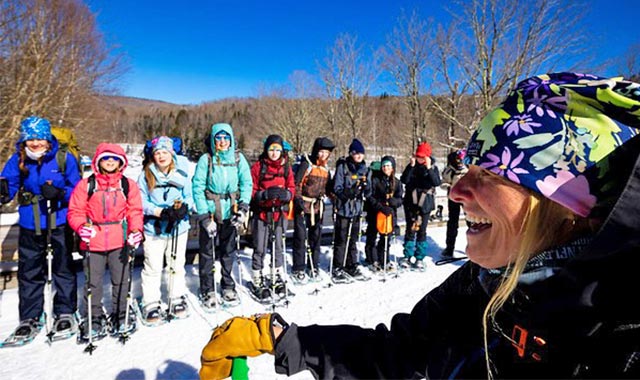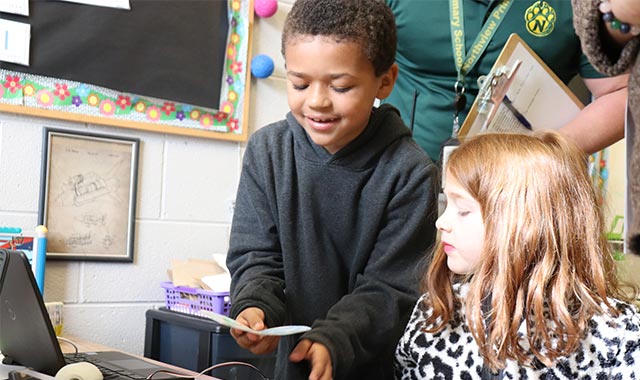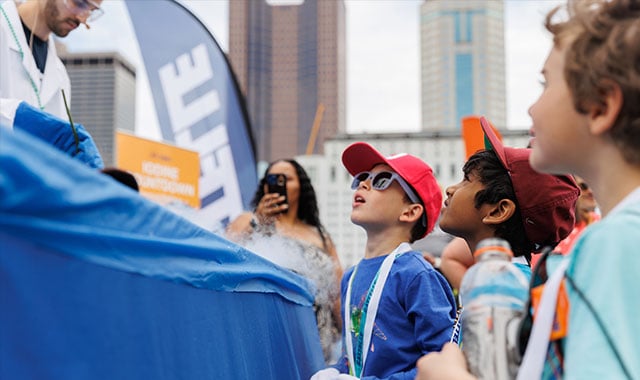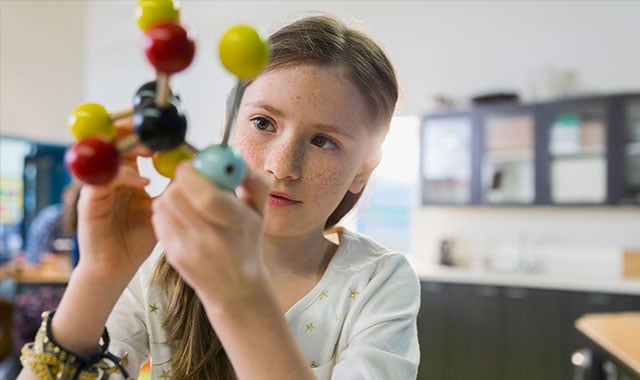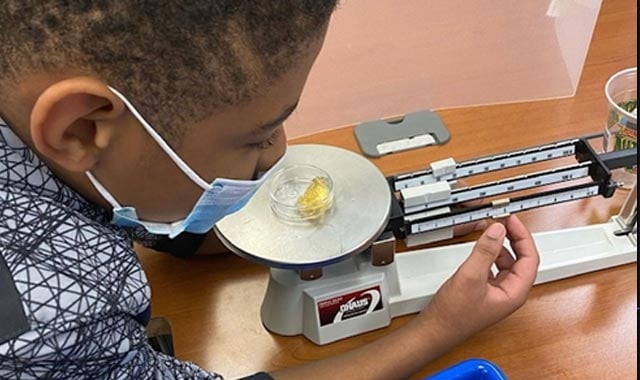Battelle, Montana State University Team with Students on Yellowstone Microbiology Project
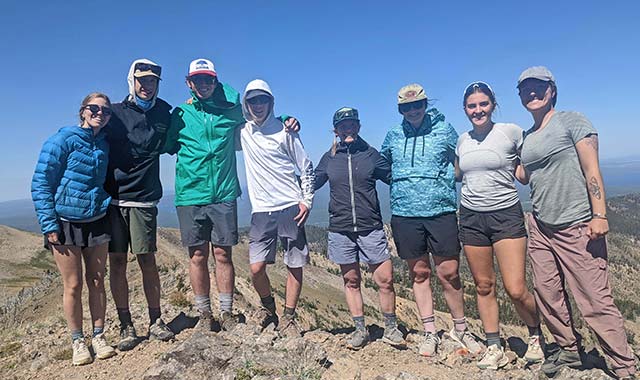
Opportunities to mix exploration of Yellowstone National Park with scientific research don’t come around that often. Fortunately for researchers from Battelle and some new friends from Montana State University (MSU), one did this year. Battelle staff partnered with colleagues from MSU to lead students on a project to collect microbiological samples in Yellowstone to enable advancement in biological processing.
In September, Battelle Biologist Fadime Kara-Murdoch made her way to Bozeman, Montana to join a team of professors and students from MSU. “This was the first time I had been to Yellowstone,” said Kara-Murdoch. “The hot springs, the animals, the sunsets—it was such a beauty. Waking up in that setting each day was quite an experience.”
Each year, Montana State conducts an undergraduate honors course called Extreme Microbiology in Yellowstone, which is co-taught by Dana Skorupa and Brent Peyton. Home to hot springs that are teeming with microbial life that survive and thrive in high-temperature environments, Yellowstone is the ideal place to discover microbes with unique characteristics that could perform beneficial functions.

Dana Skorupa (left) of Montana State University and Fadime Murdoch (right) of Battelle stop for a short rest along the shore of Heart Lake in Yellowstone National Park.
This year, Battelle partnered with MSU on the course, focusing the research on biological degradation of waste feedstocks and recovery of critical elements. Battelle provided grant money for 12 students’ travel and research at Yellowstone and two of them are considering continuing their mentorship with Battelle scientists and participating in the joint research project.
“This opportunity will allow for us to grow our archive of specialized microorganisms that can be utilized in many applications,” said Battelle Biologist Kate Kucharzyk. “As scientists and educators, we are also excited to participate in a STEM learning program from which we hope to recruit talented students as future researchers at Battelle.”
While in the field for three days, the team collected samples from the hot springs, strictly following required collection permit limits set by the National Park Service for the volume they were allowed to gather. They also measured temperature, acidity, dissolved oxygen and other environmental parameters. The students collected samples with the guidance from their professors while Kara-Murdoch provided context on the purpose of the research and what kinds of samples from the field will be valuable in this research.
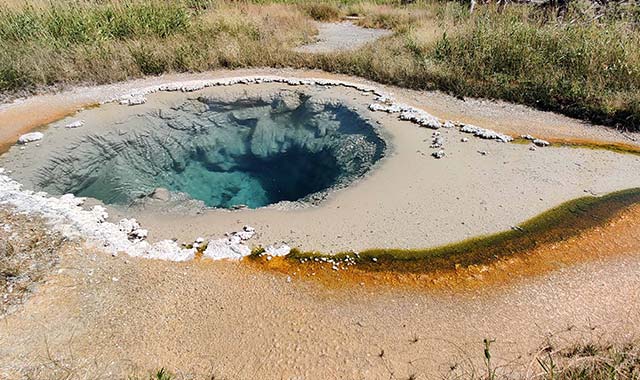
Gabby’s spring (shown here) is one of 200+ thermal features located in the Heart Lake Geyser Basin region of Yellowstone National Park.
She said the field experience was both exhilarating and challenging. “We had to have our time arranged thoughtfully and work quickly to collect samples with enough time to hike back to camp before the heavy rains,” said Kara-Murdoch. “I’m really thankful to Dana and Brent for their valuable collaboration and having everything well-planned for this trip.”
Back in the lab, the team of students is studying samples from the Yellowstone hot springs to understand if these naturally occurring hydrothermal environments contain microbes that could accelerate degradation of the various forms of plastic that are in food packaging, storage tubs, shampoo bottles and other plastic waste common in landfills. The MSU-Battelle team hopes to co-publish their research findings.
Kara-Murdoch also brought samples to support Battelle projects. Battelle is able to use any novel microbes or enzymes discovered in ongoing client projects to develop systems to separate and purify rare earth elements, reuse nylon-6 and other synthetic polymers, and transform polyether-polyurethane foam waste into high-value end products, as well as in other internally funded research and future client projects.
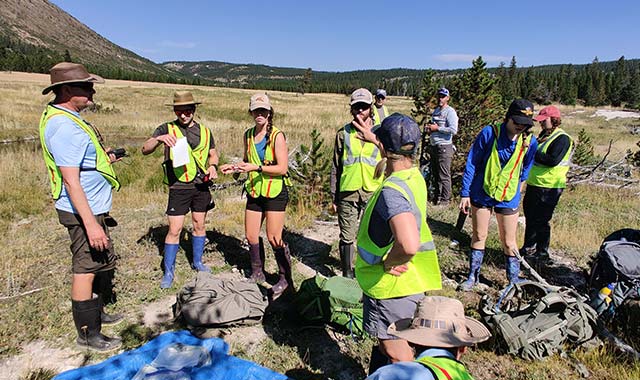
Undergraduate students in Montana State University’s ‘Extreme Microbiology of Yellowstone’ course sample for plastic-degrading thermophiles in Yellowstone National Park.
“We are evaluating other less explored applications of microbial metabolism, such as synthesis of high-value molecules used in energetics or coatings,” said Kucharzyk. “The addition of microbes that can survive in pHs lower than 2 or higher than 9 and temperatures close to boiling will expand our toolbox of options.”
“It’s been a really great collaboration. Both sides are open to new ideas and have great communication,” said Kara-Murdoch. “The students are very enthusiastic and ask great questions. They are excited to be finding solutions to real problems of the world.”
Related Blogs
BATTELLE UPDATES
Receive updates from Battelle for an all-access pass to the incredible work of Battelle researchers.
